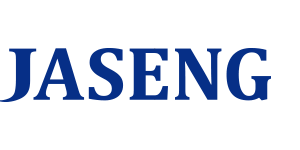H-MSAT (Help-MSAT)
What is Motion Style Acupuncture Treatment (MSAT)?
- MSAT is a treatment that involves active or passive movement of the patient while the acupuncture needles are inserted, and is an effective treatment for musculoskeletal disease patients.
- MSAT has integrated neurophysiological aspects with the traditional acupuncture theory, and is generally used in conjunction with Chuna treatment. It is also different in the manual stimulation method from Dong-si acupuncture.
- MSAT is not only used for low back pain, but can also be used for a wide variety of musculoskeletal diseases, and has been shown to be a valid option of clinical care for stroke patients with paralysis symptoms.
The applications and patient symptoms
- ① Acute non-specific low back pain patients with disability due to severe back and leg pain.
- ② MSAT is especially effective for patients with highly restricted lumbar ROM from severe low back pain, and patients whose pain is severely aggravated upon movement or shift in position.
- ③ Patients usually report low back pain and/or leg pain from acute lumbar sprains or acute HIVD.
- ④ Leg pain may range from a numb and dull sensation or tingling sensation to extreme pain in the hip, thigh, calf or foot area.
SSW-MSAT (Sandbag Self Walking-MSAT)
Aim of Treatment
- The aim of treatment is to strengthen the ligaments around the spine for patients who has lumbar pain along with degenerative intervertebral disk but are able to self-walk and carry out daily tasks without much pain.
- This technique is applicable to patients with degenerative ligaments that have trouble straightening their back while getting up from a chair when they have been sitting for a long period of time and if they experience pain when they are doing physical labor but the pain subsides when rested.
Iliopsoas MSAT
Aim of Treatment
Tension of the iliopsoas may lead to the following symptoms.
- The patient cannot straighten his/her back and is stooped.
- The patient cannot flex nor extend his/her back.
- The patient cannot lift his/her feet.
- The patient complains that his/her legs feel heavy and sluggish when walking.
- The patient cannot extend his/her legs fully in the supine position with the hip joint remaining flexed, and has difficulty flexing and extending his/her legs.
The symptoms listed above, movement restriction, and the regional pain and radiating pain due to iliopsoas tension can be relieved through Iliopsoas MST.
Gluteus MSAT
Aim of Treatment
The aim of treatment is to treat sciatica caused by sciatic nerve compression from gluteus muscle tension.
Quadratus Lumborum MSAT
Aim of Treatment
The aim of treatment is to treat pain and functional scoliosis of the lumbar region due to tightness and/or shortening in the quadratus lumborum.
Trapezius MSAT
Aim of Treatment
- This technique is applicable to patients with restricted movement due to pain from stiff neck, torticollis, restricted rotation and pain in the trapezius area.
- Trapezius MST consists of needling trigger points and tender points in the trapezius muscle and gentle active movement (rotation) of the head for recovery of normal trapezius function.
Scalenes MSAT
Aim of Treatment
- The thoracic outlet consists of 3 borders: the anterior scalene, medial scalene and 1st rib.
- When the scalenes become fatigued and tight, the subclavian artery and brachial plexus are compressed.
- The compressed subclavian artery and brachial plexus can cause tingling sensations, numbness or pain in the upper extremity of the same side.
- Scalenes MST relieves the symptoms by resolving scalene spasms.
Rhomboid MSAT
Aim of Treatment
The physician locates tender points in the rhomboid by palpating the area between the medial border of the scapular and paraspinal muscles and alleviates the tension to relieve back pain.
TMJ MSAT
Aim of Treatment
- In many patients who habitually chew food to one side or are exposed to high levels of stress, masticatory muscles around the temporomandibular joint, pterygoid and temporalis muscles become tight and inhibit temporomandibular joint opening.
- Distortion of the temporalis due to pterygoid degeneration generally causes one side to tighten and one side to weaken. The physician should resolve the tension and fatigue in the pterygoid muscle to relieve pain.
- The main cause of pain is usually TMJ disc dislocation which should normally be in place above the condyle. When the disc space is narrowed, the side of the patient’s face with the jammed joint space has a tendency to look smaller, while the opposite side looks bigger. Chuna and MSAT helps widen the narrowed disc space which promotes synovial fluid circulation and blood supply within the joint space, leading to pain relief.
Shoulder Joint MSAT
Aim of Treatment
- To relieve pain that occurs in shoulder joint movement.
- To resolve symptoms such as ROM restriction due to shoulder joint rigidity (tension or inflammation in the shoulder joint muscles).
Hip Joint MSAT
Aim of Treatment
- Tension of the muscle and ligaments, soft muscle inflammation occurs due to hip joint dislocation.
- The practitioner corrects hip joint dislocation with Hip joint Chuna.
- The practitioner relieves inflammation and pain of the surrounding tissue with Hip Joint MST.
(The Hip joint MST effects take up to 80% of the therapeutic pain relieving effects in Hip joint treatment)












